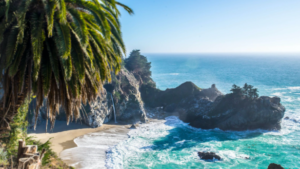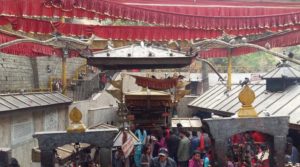Understanding Ecotourism
By Sunil sharma
Ecotourism or low impact travel has become buzzword in national and international tourism, conservation and development circles. The word has been glamourised and has become focus for marketing strategy for many tourism destinations. The roots of increasing interest in ecotourism lie in the emergence of alternative tourism in response to mass negative consequences of mass tourism, depleting natural resources in particular.
In the 1990s, the United Nations World Tourism Organisation predicted an annual growth rate of 10-15 percent in the demand for ecotourism and in another study it has shown that wildlife tourism represents 40 percent of the international travelers. Today, ecotourism is one of the fastest growing sectors of tourism.
Prosser R in his article (Societal change and the growth in alternative tourism) in 1994 has rightly outlined four forces of social change that are driving for search for ecotourism: Dissatisfaction with existing products; growing environmental awareness and cultural sensitivity; realisation by destination regions of the precious resources they possess and their vulnerability; and the changing attitudes of developers and tour operators. Tourism destinations policy, strategies and marketing should stick to the aforementioned four elements.
Nepal’s ambitious National Ecotourism Strategy and Marketing Programme of 2004 emphasises cross-sectoral cooperation at National Planning level, more private participation, poverty alleviation through promotion of village tourism and a full-fledged marketing programme.
The Ecotourism Strategy and Marketing Programme clearly outlined seven strategic direction: Convert Nepal’s ecotourism strength into comparative advantage; develop partnerships and alliances at all level; routine co-operation between tourism and conservation agencies; inviting the private sector to participate in the marketing of ecotourism development projects; developing new ecotourism areas; review trekking and mountaineering regulations; and developing an ecotourism marketing programme.
The tourism policy paper and other documents clearly stress on increasing tourist arrivals in Nepal and at the same time making the country a premier ecotourism destination. Having said that, it is perhaps useful to ask again, just what we mean by the term and what an ecotourism practice should do? Different stakeholders (natural resource managers, local people, tourism operators, policymakers and tourists themselves) have different understanding of ecotourism. As a result, they are always at loggerheads with each other. The burning example is the conflict between park officials and lodge owners at Chitwan National Park.
Nepal has to look around and take a leaf out of other countries’ book. New Zealand’s unique brand “100% Pure” is celebrating 12th anniversary. The brand is regarded as one of the most successful travel slogan ever coined. Kiwis greatest asset is their landscape. Not far behind is Costa Rica. The Costa Ricans have well understood the importance of tourism and have realised that there it pays more than simply logging the trees for timber or clearing more forest for farmland. Costa Rica has marketed its abundant and unique tropical nature to promote ecotourism as a development model.
Liberia has an innovative method to curb logging. A country which in recent past is well-known for its bloody wars is embarking on the path to becoming a model for sustainable timber by introducing bar codes ensuring that trees are harvested sustainably. Liberia has introduced high-tech tracking system for timber.
Tanzania’s Mafia Island, 30 km from mainland, is hardly a tourist hot spot yet the isle is lauded for its sustainability efforts. The southern half of the island is preserved for ecosystem. The 132-square km preserve is home to 400 species of fish and 48 types of corals, as well as giant green sea turtles and at least a few nearly extinct manatee-like dugong. Mafia Island’s beachside bandas, or cabins, are built from sustainable, indigenous coconut wood, lighted with biogas-powered electricity and stocked with solar-heated water. The lodge provides hand cranked, battery-free flashlight to each room.
Also India’s Kaziranga National Park in Assam has taken bold approach in conservation. Since 2010 park rangers have adopted take-no-prisoners anti-poaching policy that allows rangers to shoot on sight and they aggressively track down poachers. As a result, Kaziranga nowadays Kaziranga National Park has high density of tigers and their prey species.
Recently, two good news in Nepal have enthralled conservationists. First, in the past one year not a single rhino was killed in the whole country. Therefore, Zero Poaching Year was celebrated on January 3.Secondly, Shiva Community in Bardia has shown perfect example of living in harmony with people and wildlife as it has devised an innovative method to deal with dangers of wildlife. The Shiva community learnt that soothing green mint leaves and the daisy-like white chamomile flowers drove mega herbivores like rhinos away with just their smell.
Also, the two plants were found to be high-valued cash crops. For their efforts, BBC World Challenge 2011 has short-listed the Shiva Community Forest’s project as one of the top 12 projects from around the world that demonstrate enterprise and innovation at the grassroots level and help in social and environmental benefits. These activities have helped to promote conservation of natural resources and habitats and at the same time have helped improving local livelihoods through home-stay.
If successfully designed and marketed, undoubtedly ecotourism can become a major enterprise in Nepal. In order to be a role model of ecotourism, first of all major stakeholders including people at grassroots level should recognise the intrinsic value of natural environments.
Furthermore, importance should be given to wise management of activities utilising these fragile resources for a variety of purposes, including tourism development. Also, issuing of certification programmmes for ecotourism would allow initiatives among key stakeholders and local players involved with sustainable tourism efforts.
Certification of sustainable tourism and ecotourism assures that a product, service or organisation complies with a given standard eventually reducing tourism’s negative environmental and social impacts. Aforementioned ideas could be shared at Sustainable Tourism Network (STN), an informal network of I/NGOs, tourism operators, tourism professionals and individuals that have keen interest in promoting sustainable tourism practices in Nepal. The secretariat of STN is based at Nepal Tourism Board.
Thus, in order to sustain ecotourism it is imperative to create awareness and understanding about sustainable tourism and ecotourism within the tourism industry, general public and tourists, at grassroots level in particular. If not, poorly managed ecotourism could threaten the very ecosystem on which it depends.( Courtesy : TKP ) (Sharma is research, planning and monitoring manager at NTB)














